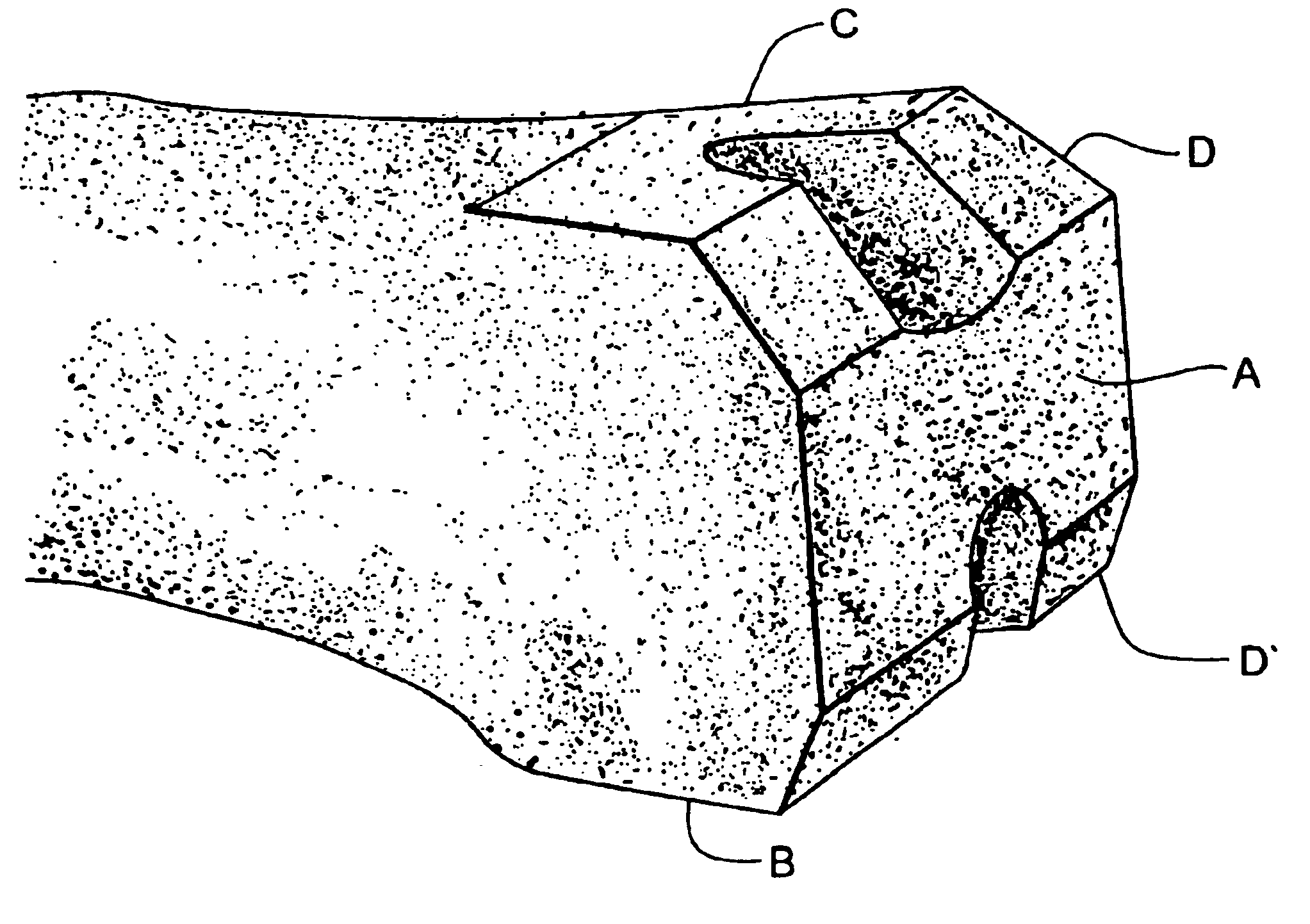Rotating track cutting guide system
a cutting guide and rotating track technology, applied in the field of instruments, can solve the problems of poor long-term affecting the function of the prosthesis, etc., and achieve the effects of improving the visibility of the surgical site, facilitating a series of controlled cuts, and great accuracy and precision
- Summary
- Abstract
- Description
- Claims
- Application Information
AI Technical Summary
Benefits of technology
Problems solved by technology
Method used
Image
Examples
examples
A quantitative assessment of the final design of the rotating track cutting guide system was performed to judge its effectiveness. Its capabilities were compared to cutting guides from a typical knee replacement system, the Exodus® System (Orthopaedic Innovations, Minneapolis, Minn.). Three experiments were performed to appraise the efficacy of the rotating track cutting guide system. The following experiments were performed:A. Precision Analysis: Evaluated the each system's capacity to reproducibly cut in the same plane.B. Blade Wear Analysis: Examined the cutting guides' success at reducing blade wear.C. Femoral Component Fit Analysis: Provided information on the amount of contact between prosthesis and the resected bone surface to determine the accuracy with which the cut bone fit the prosthesis.
A. Precision Analysis
The precision analysis evaluated a cutting guide's ability to cut consistently in the same plane. After distal femoral condyle resection in a simulated total knee art...
experiment a1
Methods for Experiment A1
Twelve 1145 urethane foam knees (Pacific Research Laboratories, Inc., Vashon, Wash.) were used. The rotating track cutting guide system and the Exodus® System were each tested with six knees and six new K-2000-25 3M Maxi-driver® blades (Komet Medical, Savannah, Ga.). After securing each cutting guide to a femur, the distal femoral condyles were resected. A Craftsman® Magnetic Universal Protractor (Sears, Hoffman Estates, Ill.) measured the angle of the lateral and medial condylar planes with respect to the ground. The protractor had an accuracy of ±0.5° and was maintained in a consistent orientation when placed on each condyle.
When measuring the condylar plane orientation, the angle indicated by the protractor was read by two individuals to account for user error. Both individuals separately measured the angles associated with the resected medial and lateral condylar planes. Each individual then calculated the angular difference between the two condylar plan...
PUM
 Login to View More
Login to View More Abstract
Description
Claims
Application Information
 Login to View More
Login to View More - R&D
- Intellectual Property
- Life Sciences
- Materials
- Tech Scout
- Unparalleled Data Quality
- Higher Quality Content
- 60% Fewer Hallucinations
Browse by: Latest US Patents, China's latest patents, Technical Efficacy Thesaurus, Application Domain, Technology Topic, Popular Technical Reports.
© 2025 PatSnap. All rights reserved.Legal|Privacy policy|Modern Slavery Act Transparency Statement|Sitemap|About US| Contact US: help@patsnap.com



